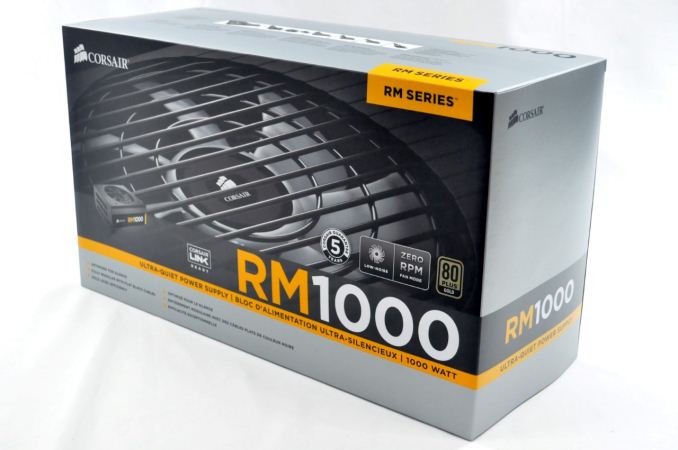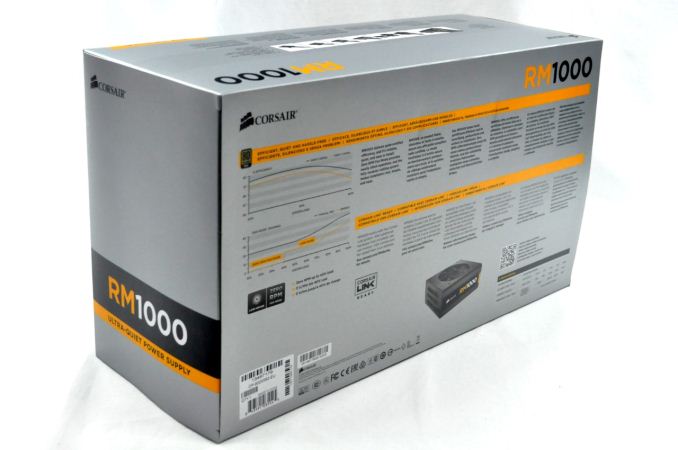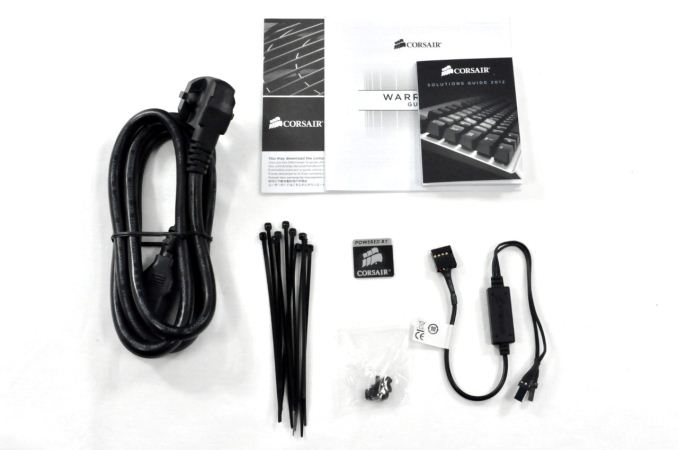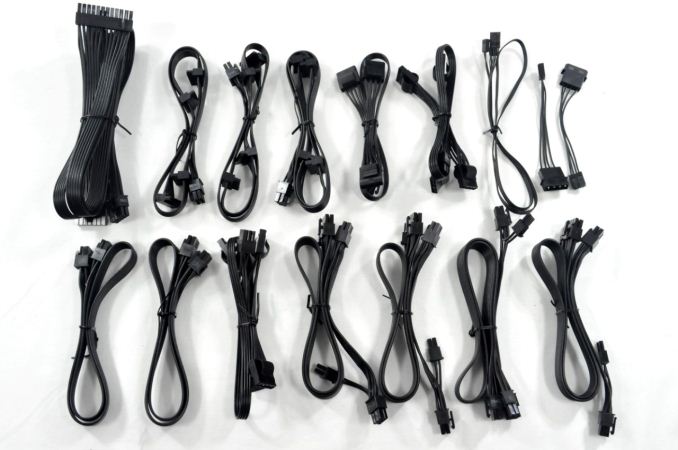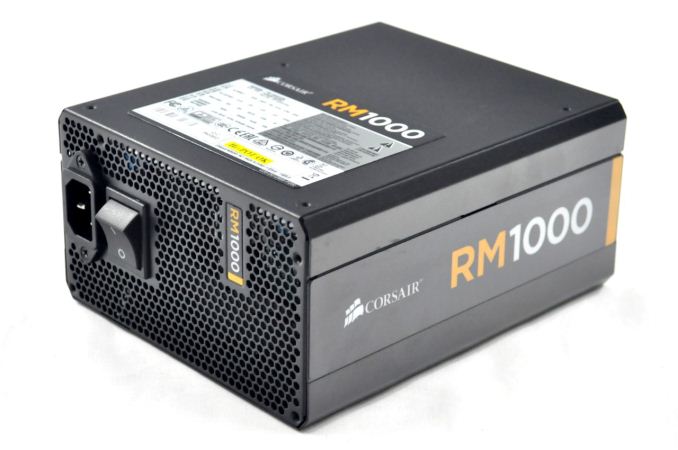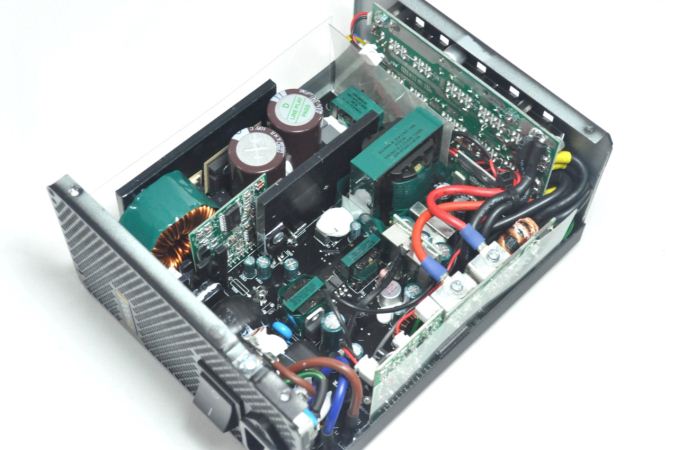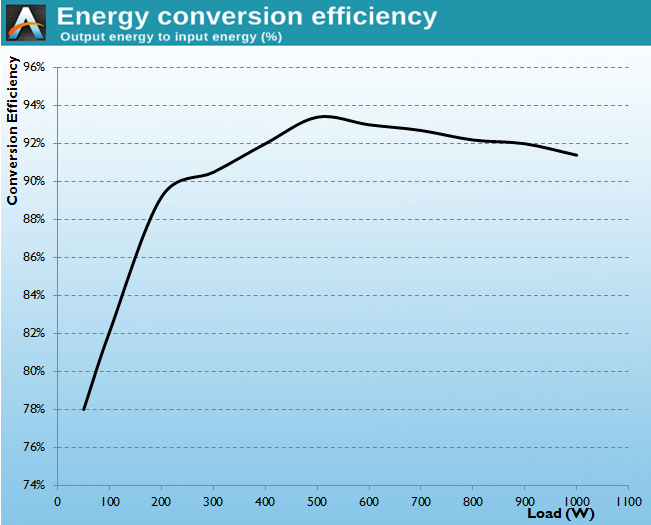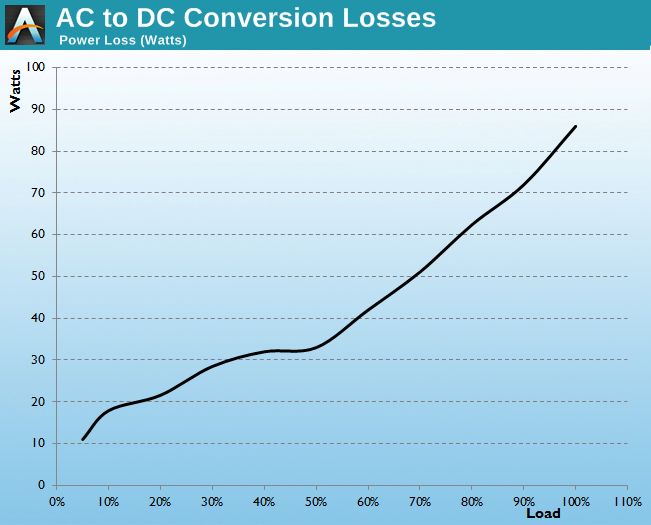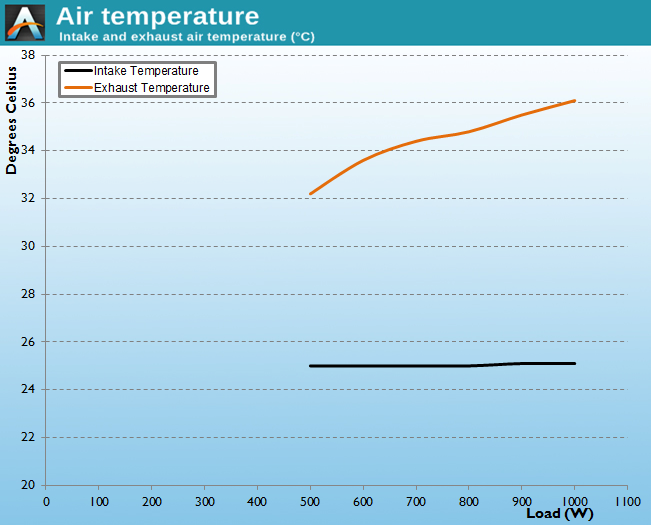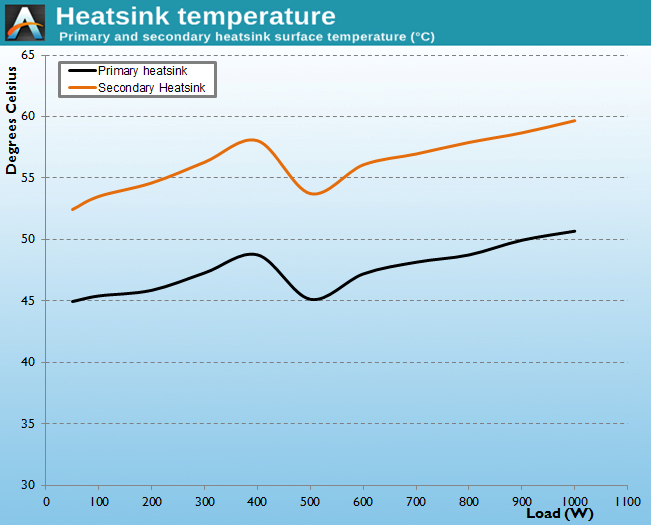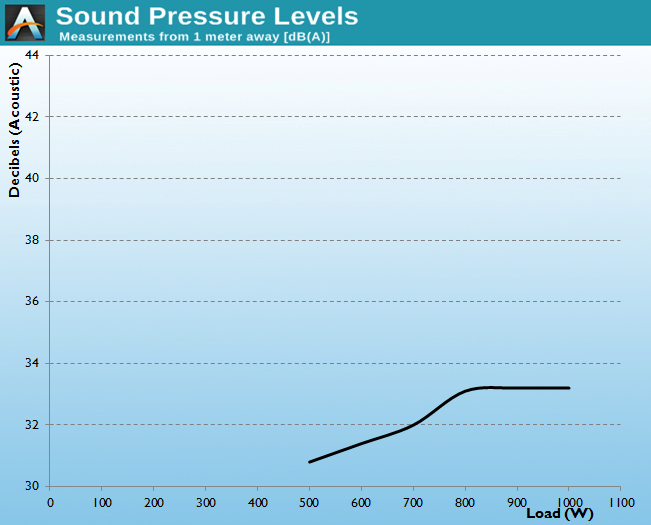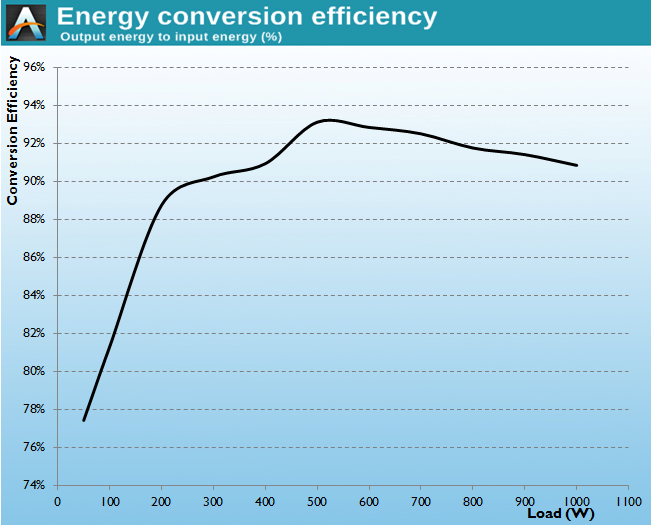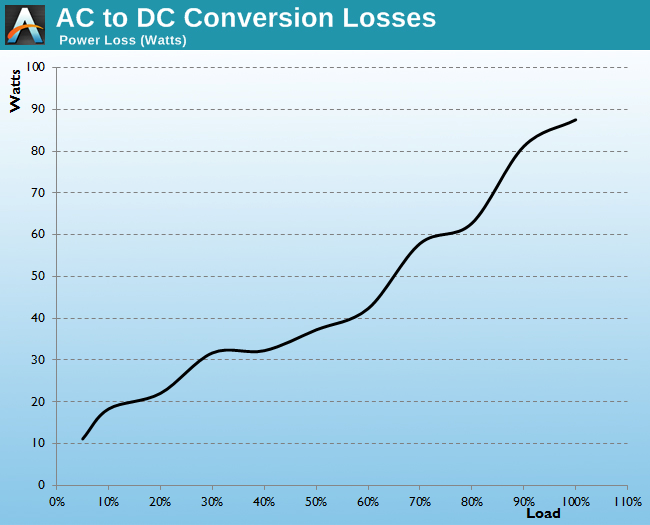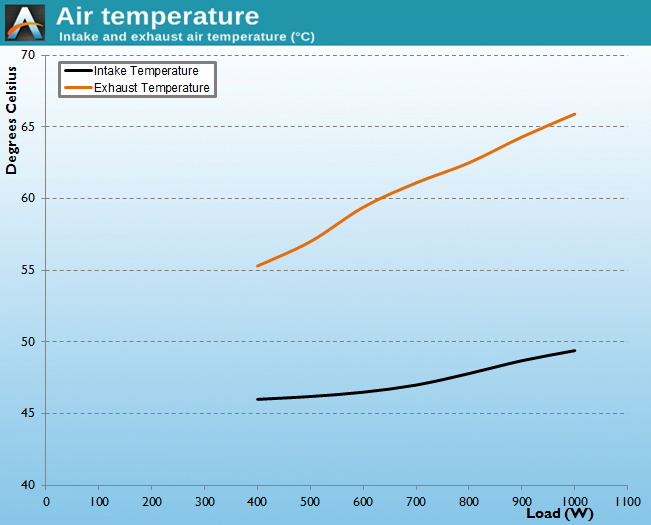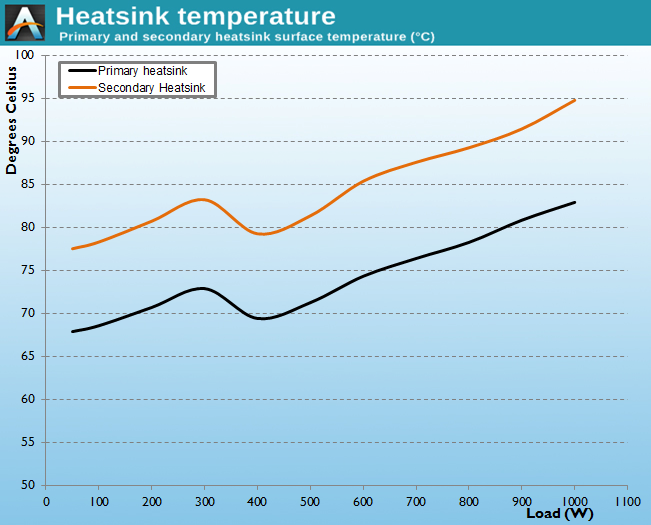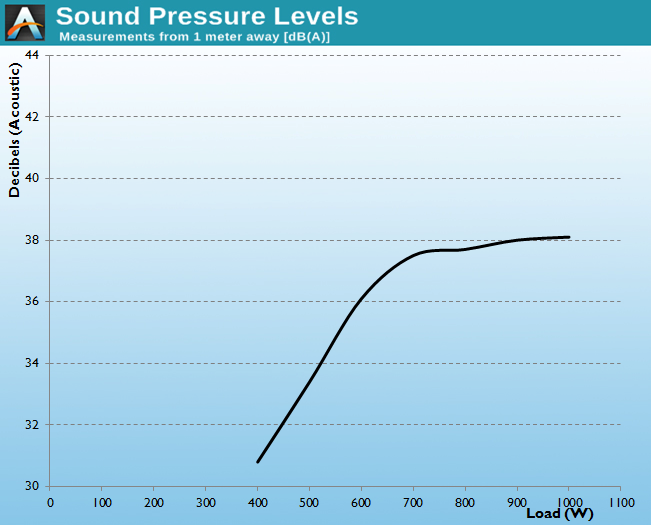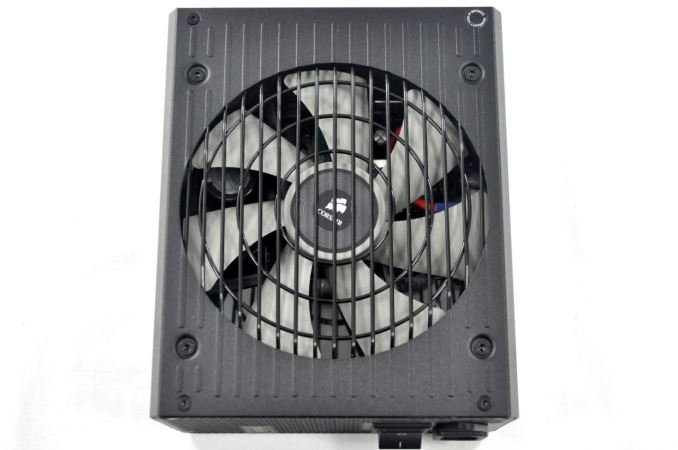
Original Link: https://www.anandtech.com/show/7950/corsair-rm1000-psu-review
Corsair RM1000 Power Supply Review
by E. Fylladitakis on April 24, 2014 6:00 AM EST- Posted in
- Corsair
- PSUs
- Cases/Cooling/PSUs
- RM Series
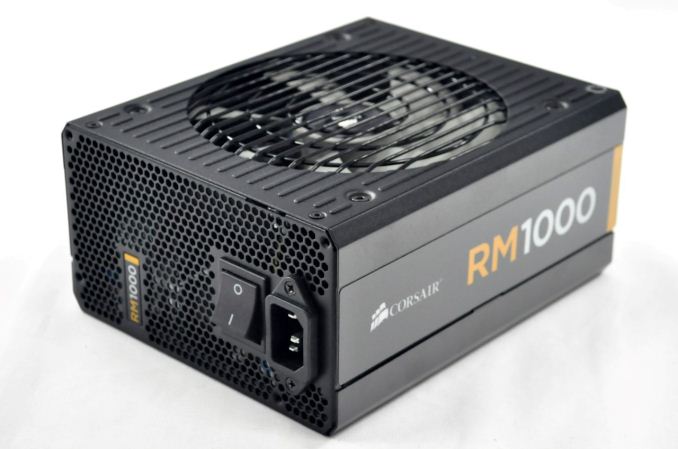
Introduction
Corsair has created a good reputation for their branded PSUs, and today they are among the most popular choices for gamers and enthusiasts. The first PSU from Corsair to find its way into our new testing lab is the RM1000, an 80 Plus Gold Certified unit with a rated output of 1000W at 40°C ambient. Given the rated power output and retail price of $169.99 after rebate, the RM1000 is understandably targeted at advanced users and gamers, and very few PCs require so much power. The target audience can be quite demanding, however, and a simple 80 Plus Gold certification is not enough to entice such users, so let's see what else Corsair has up their sleeves.
The RM series PSUs are optimized for silence and there are currently six models, ranging from 450W to 1000W. That makes the RM1000 the most powerful model of the series but it also is significantly different from the less powerful models as well. In fact, it's almost entirely different. The 750W and the 850W models come from a different ODM, as they are based off of Chicony Electronics designs, while Channel Well Technologies (CWT) supplies the other four models. As such, the RM1000 and the RM450/RM550/RM650 are all based on a CWT design, yet the RM1000 we're looking at is based on a different platform than that of the lower wattage models.
Corsair has had many CWT derived designs in the past and most of them were very popular among advanced users. However, times have changed and there is stiff competition in the market right now, especially in this particular segment, as every single manufacturer apparently wants a high performance 1000W model as their halo product, and the market has been virtually flooded with such PSUs. Not surprisingly, it's no longer possible to compete at the top of the market by simply offering a "high performance" PSU. Let's have a thorough look at the RM1000 and see what it can offer to consumers and where it falls short.
Packaging and bundle
We received the Corsair RM1000 inside a large, interestingly designed cardboard box. Most of the box is grey with yellow colored accents, the series' trademark. The front and sides of the box are relatively tidy, with badges and summarized descriptions of the most important features. The rear of the box offers a wealth of information regarding the performance of the power supply, summarized in charts and a table rather than tons of marketing text.
The Corsair RM1000 bundle is adequate, but it could have been better for a unit of this class. Alongside the power cord, manual and screws, Corsair also supplies a few cable ties, a case badge with the company's logo, a Corsair Link interface cable, and an advertising leaflet.
As this is a high output, fully modular unit, numerous cables are supplied alongside the PSU. All of the cables, including the ATX connector, are black ribbon cables without sleeving. Some will say they look significantly better than sleeved color-coded wires and require less space, though that's a matter of personal preference. while it looks like Corsair chose not to include a bag for the extra cables, the body of the unit itself comes wrapped inside a pouch for protection during shipping, and this pouch can be used to store the cables later on.
External Appearance
Corsair painted the chassis of the RM1000 a matte black color, as the company usually does with their PSUs. Aesthetic improvements include chamfered edges and decorative stickers on the sides of the power supply, as well as parallel, embossed ridges aligned with the fan's finger guard design. Note that the chassis of the Corsair RM1000 is 180mm long, which is significantly longer than typical ATX PSUs. This could be a problem if the PSU is to be installed inside a small or low-cost case, but that seems unlikely considering the class and power output of the unit. Regardless, you'll want to make sure your case is able to accommodate such a large PSU.
Corsair placed the sticker with the specifications of the PSU on the top of the chassis as the front of the chassis is littered with the connectors for the modular cables and the sides of the Corsair and RM1000 logos. The CPU and PCI-E cables share the same style connectors, the split 10-14 pin connector is for the ATX cable and the smaller connectors are for SATA/Molex cables. There is also a small connector for the Corsair Link interface. We should note that the RM1000 sports the "Basic" Corsair Link interface, which allows you to monitor some basic figures (e.g. fan speed and the 12V line amperage), but it is far less interesting than the complete monitoring capabilities of their top-tier digital models.
Internal Design
The 135mm fan responsible for the cooling of the RM1000 is a Corsair NR135L fan. As even the UL certification number points back to Corsair, this technically is Corsair's own unique product and not a re-branded fan, though some Chinese factory still makes it for them. It has a rifle bearing and a maximum speed of about 1600 RPM. At this point we should note that the RM1000 features a "zero-RPM fan mode", meaning that the fan will not start until the load reaches a significant load (about 40%).
As we noted in the introduction, the OEM behind the RM1000 is Channel Well Technologies (CWT). The first thing that you'll notice about the design is not some special feature or fancy component but the heatsinks, which are preposterously small for a 1000W unit that is designed for low-noise operation and features a fanless mode. In fact, the heatsinks not only are small but also are nothing more than simple quadrangular metallic slabs, with minimal heat dissipation surface. Apparently, Corsair has placed a lot of faith on CWT's design and efficiency, especially considering the five year warranty they provide.
The 400V / 390 μF APFC capacitors are high quality parts supplied by Nippon Chemi-Con. The rest of the electrolytic capacitors are supplied by TAICON and CapXon, Taiwanese companies, with the exception of a stray small Nippon Chemi-Con on the connector's PCB. Although TAICON is not very well known, it is an old company and the quality of their products is considered to be on par with their (similarly priced) Japanese counterparts. CapXon is a very well known company and makes above-average quality products, but they've also had a couple of failed series in the past that rightfully reduced the reputation of the company amongst enthusiasts.
The build quality of the RM1000 is excellent overall. The soldering job is very good, with zero bad joints or burnings, only a few spots where the assembler was too generous with the solder. For mechanical cohesion, the manufacturer used a lot of glue to secure most components. An extra application of lacquer and glue can be seen on the inductors, most likely to minimize the chance of vibration-generated noise (also known as "coil whine").
Cold Test Results
For the testing of PSUs, we are using high precision electronic loads with a maximum power draw of 2700W, a Rigol DS5042M 40MHz oscilloscope, an Extech 380803 power analyzer, two high precision UNI-T UT-325 digital thermometers, an Extech HD600 SPL meter, a self-designed hotbox, and various other bits and parts. For a thorough explanation of our testing methodology and more details on our equipment, please refer to our How We Test PSUs - 2014 article.
The Corsair RM1000 performs very well at room temperature, easily surpassing the 80Plus Gold Certification limits and reaching a maximum efficiency of 93.4% at 50% load. The average efficiency of the RM1000 within the nominal load range (20% to 100%) is 91.8%, which is an astonishing figure. When the load is reduced down to 50W, the efficiency drops down to 78%; however, although that may sound like a poor result, we should clarify that this actually is a very good figure and rarely can a PSU maintain an efficiency this high at just 5% load. However, such a low load is considered an "out of range" condition and does not affect the 80Plus certification, which takes into account only the 20% to 100% nominal capacity range.
There are no exhaust air temperature or noise measurements below 50% load because the fan does not spin until we reach 500W. The RM1000 is virtually inaudible while operating at room temperature, even when heavily stressed. Due to the passive cooling profile and the small heatsinks, however, the RM1000 tends to run warm, with the temperature of the tiny secondary side heatsinks floating around 55 °C and reaching up to 59.7 °C.
Hot Test Results
From the tables below, it can be seen that the output power quality of the Corsair RM1000 is very good. The maximum voltage ripple that our instrumentation recorded was just above half of the ATX design guide suggested limit (the limits are 120 mV on the 12V line, 50 mV on the minor voltage lines), under full load and inside the hotbox. Cross-load testing negatively affects the power quality of any power supply, yet the RM1000 manages to pass the test, with the 12V line registering up to 98 mV while delivering a massive 800W.
| Main Output | ||||||||
| 203.84 W | 506.25 W | 752.95 W | 997.56 W | |||||
| 20.38% | 50.62% | 75.29% | 99.76% | |||||
| Line | Amperes | Volts | Amperes | Volts | Amperes | Volts | Amperes | Volts |
| 3.3 V | 4.14 | 3.40 | 10.36 | 3.37 | 15.53 | 3.34 | 20.71 | 3.30 |
| 5 V | 4.14 | 5.14 | 10.36 | 5.11 | 15.53 | 5.00 | 20.71 | 4.98 |
| 12 V | 13.80 | 12.21 | 34.50 | 12.13 | 51.76 | 12.04 | 69.01 | 11.97 |
| Line |
Regulation (20% to 100% load) |
Voltage Ripple (mV) | |||||
| 20% Load | 50% Load | 75% Load | 100% Load | CL1 12 V | CL2 3.3 V + 5 V | ||
| 3.3 V | 3.0% | 16 | 24 | 26 | 30 | 10 | 26 |
| 5 V | 3.1% | 18 | 26 | 30 | 36 | 12 | 30 |
| 12 V | 1.95% | 26 | 30 | 54 | 70 | 98 | 24 |
The impact that the higher ambient temperature has on the energy conversion efficiency is virtually miniscule, reducing the average nominal load (20-100%) efficiency of the RM1000 from 91.8% down to 91.4%. This is an excellent result for such a powerful power supply, especially when the ambient air temperature increased by more than 20 °C.
The large increase in the ambient air temperature naturally has an effect on all of the temperature readings. This time the fan starts a bit earlier, at 40% load, and its speed increases rapidly, obviously reacting to the high heat. The speed of the fan virtually maxes out at 70% load, with the cooling system giving everything it has to keep the RM1000 cool enough. The fan becomes clearly audible but not overly loud even while the unit is severely stressed, but its speed cannot be increased any further and so it is unable to help the thermal performance of the RM1000 beyond a certain point.
While the power supply keeps operating just fine, the temperatures are significantly elevated, above what we consider a "comfortable limit". This however also is with an ambient temperature significantly higher than the 40 °C rating of this power supply, therefore the fact that it can keep delivering its maximum output and electrically perform well enough to maintain its specifications is quite a feat.
Conclusion
Most of Corsair's products are focused on specific target groups and the RM PSU series is targeted towards advanced users who appreciate silence above all else. The RM1000 that we reviewed today is the most powerful unit of the series, capable of feeding very high performance gaming systems. It's actually rather strange that the series would expand up to a 1000W unit; it is not impossible to build a system that would require such a massive level of power while remaining quiet, but it would be bulky and very costly. Nevertheless, if you are trying to build a very powerful and low-noise system, the RM1000 is there to lend a hand. Moreover, even though the RM1000 is focused on low-noise operation, it does not mean that Corsair neglected its performance or appearance.
Visually, the subtle modifications, such as the chamfered edges and the rimmed bottom, make the fully modular RM1000 aesthetically pleasing without standing out too much. The all-black, sleeveless cables are another attraction of the unit, as I feel they are visually superior to sleeved color-coded cables; however, because of their ribbon-like design with the wires bonded together, the cables of the RM1000 are a bit stiffer to turn and route than typical cables.
The electrical performance of the RM1000 is very good and we expected nothing less from a CWT platform, which usually are very well designed and made. The RM1000 is highly efficient and remains so even when the ambient temperature increases significantly, which is infrequent even for very advanced designs. It also provides good quality power, with low voltage ripple even under heavy stress.
Where the RM1000 could use some improvement is on thermal performance, as it seems unwise to heavily tune a 1000W unit with such small heatsinks towards low-noise operation. Despite that, the RM1000 kept performing very well during our testing, even with the ambient temperature much higher than its 40 °C rating, but the temperature of the unit increased to uncomfortable levels and the cooling system could not do anything to react because the fan's speed was already maxed out.
When it comes to quality, the Corsair RM1000 scores very well, yet there is room for improvement. The unit is very well made, with an excellent soldering and assembly job. Most primary components come from very reputable manufacturers, such as Nippon Chemi-Con and TAICON. However, some components come from manufacturers with a mediocre reputation, such as the CapXon capacitors on the secondary side of the transformer. Corsair must know what they are doing though, as they are covering the RM1000 with a five-year warranty.
The MSRP of the RM1000 is $199.90 but we found it online for $169.99 after rebate. It's not the cheapest 1000W unit with an 80 Plus Gold certification, but considering the quality and performance of the PSU, the price is justifiable. If you are the kind of user that wants a really powerful PSU tuned for low-noise operation, the RM1000 should find its way into the top few spots of your shortlist.

